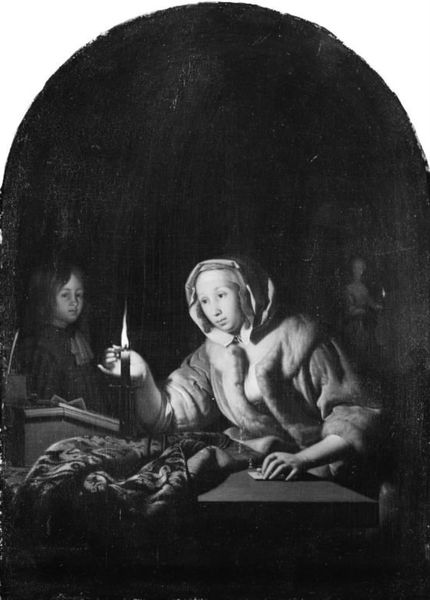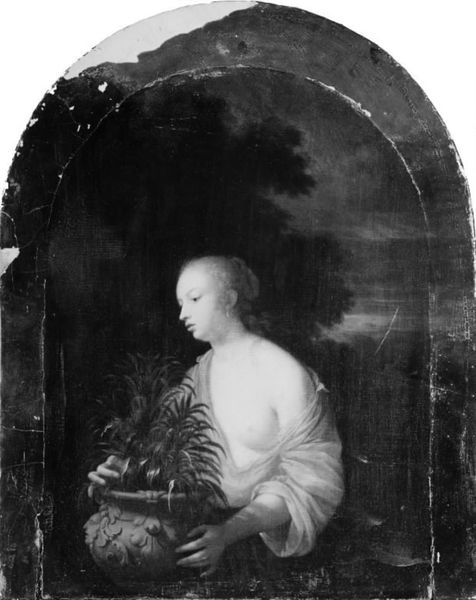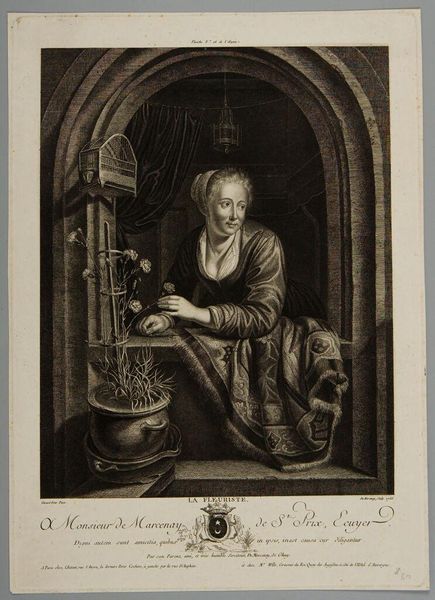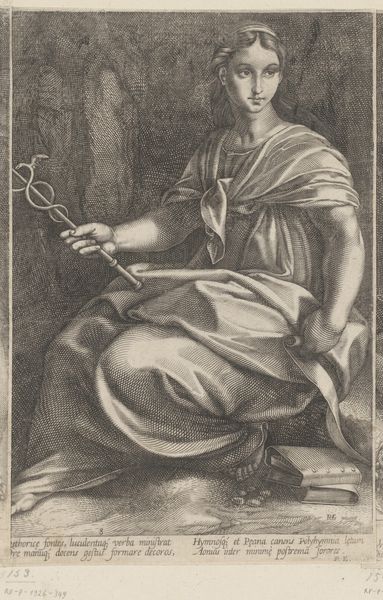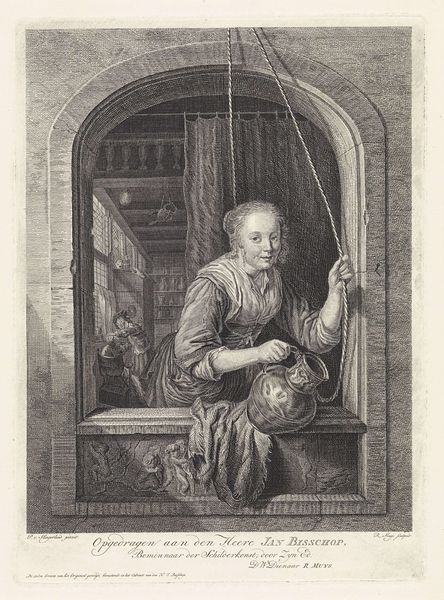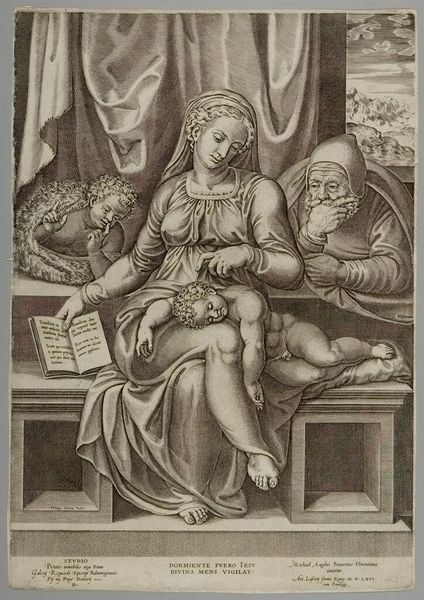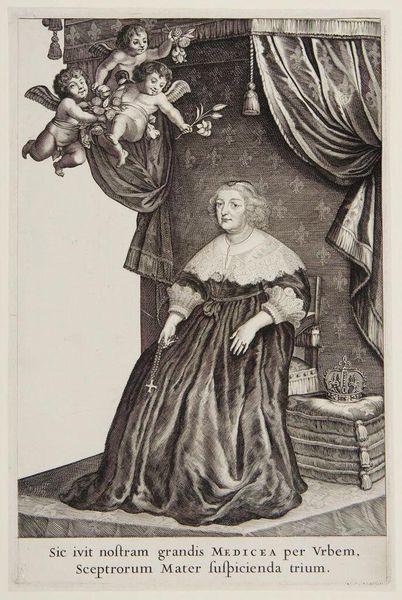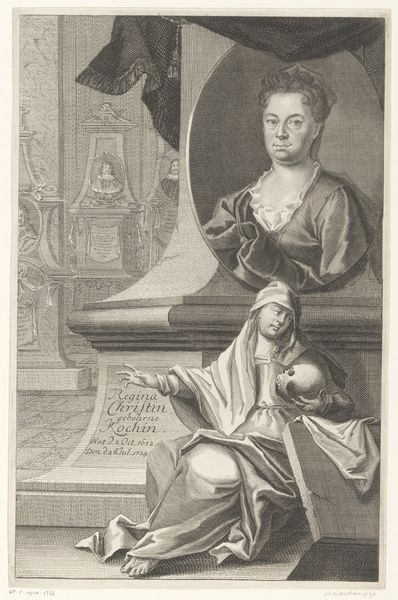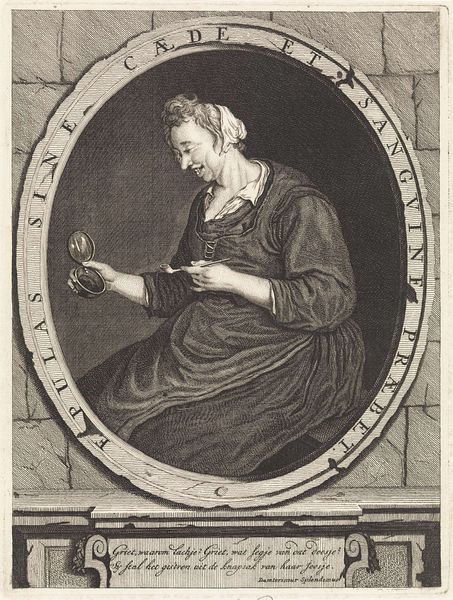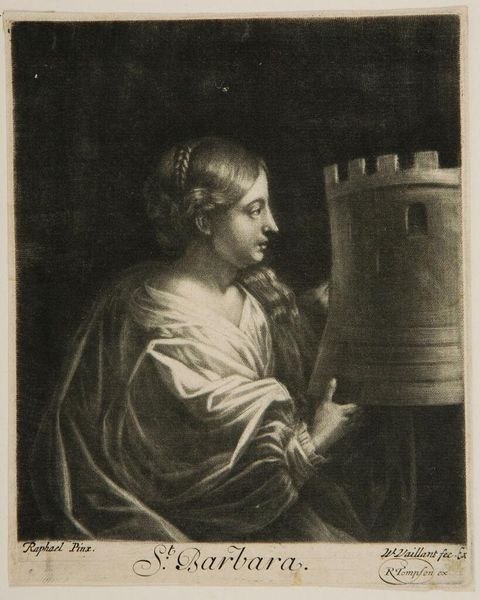
wood
#
black and white photography
#
portrait image
#
centre frame
#
black and white format
#
b w
#
black and white theme
#
black colour
#
black and white
#
monochrome photography
#
wood
#
monochrome
Dimensions: 26.8 cm (height) x 21.5 cm (width) (Netto)
Editor: Here we have Louis de Moni's "Girl with a Distaff," created sometime between 1713 and 1771. It is an oil on wood painting. I'm struck by how much everyday life is packed into one scene. What do you see in this piece? Curator: For me, the most compelling element is the attention given to the tools and provisions. Look closely at the distaff in her hand, the meticulously rendered scales, the bread and fruit spilling from the basket. This speaks to the materiality of daily life, to the labor involved in producing even the simplest goods. Consider how these objects are presented, not as mere background details, but as significant actors within the composition. How does this compare to, say, idealized portraits of the aristocracy at the time? Editor: That's a great point. Wealthy portraits often focus on symbols of power and status. So, is de Moni offering a different view of womanhood, focusing on the labor of working class or even middle-class women? Curator: Precisely. This artwork can be interpreted as a materialist statement about the importance of labor and the tangible goods produced by it. The wood support itself underscores the importance of materiality. How do you see the scale balancing into this concept of value creation and assessment of goods in everyday life? Editor: I guess the scale reinforces this idea of worth. Everything, from the apples to the thread, is part of a system of exchange and labor. It really makes you think about the economic realities of the time. I’ve always seen art through aesthetics and symbolism, but focusing on the material aspects has really opened my eyes. Curator: It is always illuminating to observe how closely intertwined art and historical making practices are.
Comments
No comments
Be the first to comment and join the conversation on the ultimate creative platform.
